Securing Your Store
Picture your best, Lexus-driving customer. She’s just stocked up on her seasonal allotment of bedding plants and potting soil. You exchange pleasantries as she comes through the checkout and then wave a fond farewell as she takes her cartload of flats to the car. But what you don’t see as you turn to the next customer in line is the extra flat she picks up as she rolls past your entrance display. A flat she doesn’t pay for a flat she shoplifts perhaps because she feels entitled to a little extra as a regular customer.
If you can’t believe any of your customers would do this, you’re not alone. But odds are you do have a customer who’s done this. And you’re not alone in that, either. Lawn and garden retailers nationwide are beginning to acknowledge and address the problem of theft by both shoppers and employees.
An average of 3-6 percent of gross sales is typical for theft-related shrink at garden centers, says Jeff Warschauer of Nexus Corporation, a greenhouse manufacturer that has seen theft-related design become an important feature in new greenhouses. According to the 15th Annual Retail Theft Survey conducted by Jack L. Hayes International, a top loss prevention and inventory shrinkage control consulting firm, more than $4.7 billion was lost to shoplifting and employee theft in just 25 U.S. retail companies in 2002. A mere 2.43 percent of those losses were recovered. Garden center retailers frequently experience losses of $100 or more per shoplifting incident.
“A garden center has to be the hardest retail environment to secure properly,” says John Trax Jr., general manager of Trax Farms Market, Finleyville, Pa. “It has many entrances, loading areas and outdoor sales areas. It is often extremely busy, and there is not enough staff to properly watch everything.” But ignore this problem, Trax hypothesizes, and you could see theft-related shrink soar to 10 percent of gross sales.
Customers Who Steal
Platt Hill Nurseries in Carpentersville, Ill., is, like most family-owned garden centers, a neighborhood kind of place the kind of place where it’s hard to admit that your good customers, your neighbors, would steal from you. General manager Shirlee Stanchina says accepting the shoplifting reality has taken most of the seven years she’s been at Platt Hill Nurseries. “Platt [the store’s owner] finally realized what was going on,” she says. “He caught a couple of shoplifters himself. He realized that everyone wasn’t as honest as he was.”
Stanchina estimates that shoplifters steal, on average, merchandise worth $100-200 a hit. Two years ago, a man walked boldly out the door with a cart of 20 hanging baskets. Just a few months ago, a professional shoplifter visited Platt Hill Nurseries. When the police searched her home, the place was filled with stolen items from myriad retailers.
The shoplifting scene is similar at Trax Farms. “On opening the store last week, we found an entire shopping cart full of merchandise already bagged in our bags in the back of the store” Trax says. “The merchandise was hurriedly shoved into the bags, not packed properly. This is a trick we have seen many times: Pack the stuff you want to steal into the store’s bags and then just walk out the door with an entire cart load. Nobody will question you since it looks like you already paid. In this case the shoplifter must have gotten nervous and skipped out without trying to get the stuff out. The value of the merchandise in the cart: more than $120.”
Employees Who Steal
If it’s tough to admit that a good customer would steal from you, it’s a greater affront still when employees steal. Yet surveys indicate that theft from employees is a larger problem than shoplifting. Ernst & Young LLP reported in its 2003 “Study of Retail Loss Prevention” survey that 46.6 percent of respondents identified employee theft as a source of shrink. Shoplifting lagged behind at 31.8 percent. Other sources of shrink included things like paperwork errors and vendor issues.
One cautionary tale from the garden center industry recounts employees stealing far more than $100,000 from their large, mid-Atlantic states employer. More than 80 percent of the cashiers were in cahoots with an assistant manager who helped them manipulate the POS inventory control system. Cashiers would, for example, discount a $19.95 poinsettia to $9.95 and pocket the $10 difference. Store management used that same POS system to identify the problem when the timing of the discounts didn’t make sense.
Loss of actual cash from the registers is minimal at Trax Farms now. “We issue a counted-out drawer to each cashier at the beginning of the shift. At the end of the shift, the cashier turns in the sales, plus their starting cash. We allow them to be off by $2 per day, and we allow them to be over that limit twice,” Trax says. “The third time they pay us the difference or lose their job. This policy was put in effect years ago after we caught a cashier who had stolen more than $3,000 from us.”
Beyond greed, peer pressure also leads to employee theft, argues Stanchina. She has dealt with employees under-ringing family and friends. “We hire local kids, and there is that pressure from friends and people they know to give them a discount.”
Preventive Measures
Preventing theft-related shrink can be as simple as having an employee check receipts at the exit, as is done at Platt Hill Nurseries, or as sophisticated as installing security cameras, which Trax Farms intends to do.
“I recently went on Ian Baldwin’s England Tour and was shocked at the amount of security in place at English garden centers,” Trax says. “I don’t think we visited one store that did not have article surveillance systems in place. This is not to imply that the English are more apt to steal, but rather that we in the United States have blinders on.”
Trax anticipates installing 25 cameras to cover the indoor area of Trax Farms Market. Though the initial expense will be large, Trax estimates a one-year payback. “Assuming a very conservative 1-percent shoplifting loss and probably a 50-percent reduction by using the cameras, we get a one-year payback.” In the meantime, Trax has restricted his employees to leaving the building through a single exit, issued employee numbers and required cashiers to use the employee number to give the employee discount. “This allows us to track what employees are buying and whether they actually paid,” Trax says.
Security doesn’t have to be an expensive venture if you lease, Warschauer says. Nexus client The Farm at Green Village in Green Village, N.J., maintains a sophisticated security system for about $350 per month, according to Warschauer. The system includes associated security cameras that feed into a monitor that sits on owner Jim Brill’s desk. The monitor is divided into six grids, one for each camera. “A toggle switch zooms in and out on each area they are monitoring, right down to a pebble of dirt 30 yards away from the camera,” Warschauer explains. “Jim said that with this camera system, he has seen some of his best customers, driving Lexus and Mercedes, loading their five bags of mulch and then adding a couple of extra.”
Simpler camera systems are available for $200 per month. Leasing the equipment, such as cameras and monitors, helps retailers keep pace with the latest technology. Warschauer recommends several cameras on poles in parking lots and in high-risk areas, such as darker corners, back doors, giftware areas and other places that are difficult to monitor.
For now, Platt Hill Nurseries is forgoing security cameras. The retailer’s customer service approach of asking departing customers whether they found everything while verifying their receipt is part of the increased focus on security. Two gates where customers can come and go freely are now manned with employees. And for the new store that is being added to the greenhouse operations, Stanchina says they are working with garden center consultant Judy Sharpton to design a one-entrance, one-exit shop to help control traffic flow and improve security.
Warschauer agrees that design can be a big help. “The design should certainly incorporate your registers to where you’re watching your doors or the centralized point where customers have to go,” Warschauer says. “With the layout of the store and traffic flow it is important to place employees, preferably your cashiers because it should be part of their responsibility, where they can watch customers coming and going.” Remember to keep exits where employees can see them. “So many garden centers have doors in the very back, through the greenhouse or somewhere hidden with low traffic flow,” adds Warschauer, “so right out to the customers’ cars the stuff goes.” Perhaps most simply, Platt Hill Nurseries has posted signage, asking customers to pay for their purchases. “Some people laugh at it, but we do have a sign stating that shoplifting is a problem, we just ask them to pay,” Stanchina says.
Theft is present in all retail environments, and the garden center environment is particularly difficult to secure. “But it’s not impossible if you understand what needs to be done,” Trax says. “Theft has always been a problem, but with shrinking margins in many markets, it may be life or death for many garden centers. If we are only making 1-percent net and theft is 1 percent, I can’t think of a faster way to increase our bottom line.”







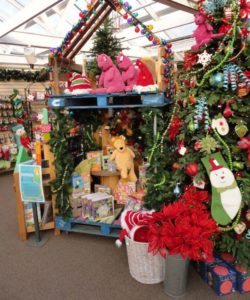

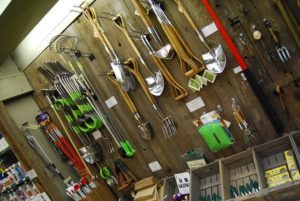
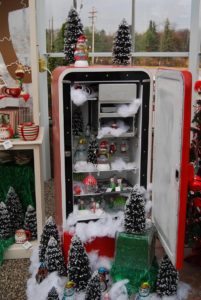
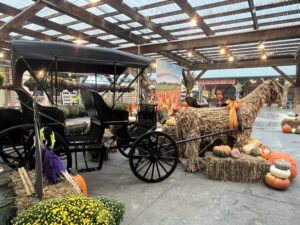
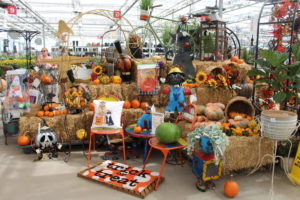



 Videos
Videos





